
6 minute read
Signs of change
- Henry David Thoreau
Advertisement
Story and photos by Marlene Borneman
We all experienced a great deal of unexpected changes in 2020. The coming of spring reminds me that changes can be splendid and a welcome rest. Turning the calendar to March was such an uplifting feeling this year. I can't wait to see what spring brings to Rocky.
March 20, 2021 is the Vernal Equinox, the first day of spring. Rocky will be displaying hints of spring by that time, some obvious, some not so much, setting in motion winter's end. Some folks forsake Rocky in the winter seeking a more temperate climate and not returning until summer. Others savor every season and do not want to miss any details!
Before I can say “Abra Ka Dabra,” markers of spring will be peeking over snow drifts and coursing along on cold winds. Signs of spring can be tricky to spot in Rocky's high elevations. The most obvious is the increasing daylight hours and warmer temperatures, but there are other clues.
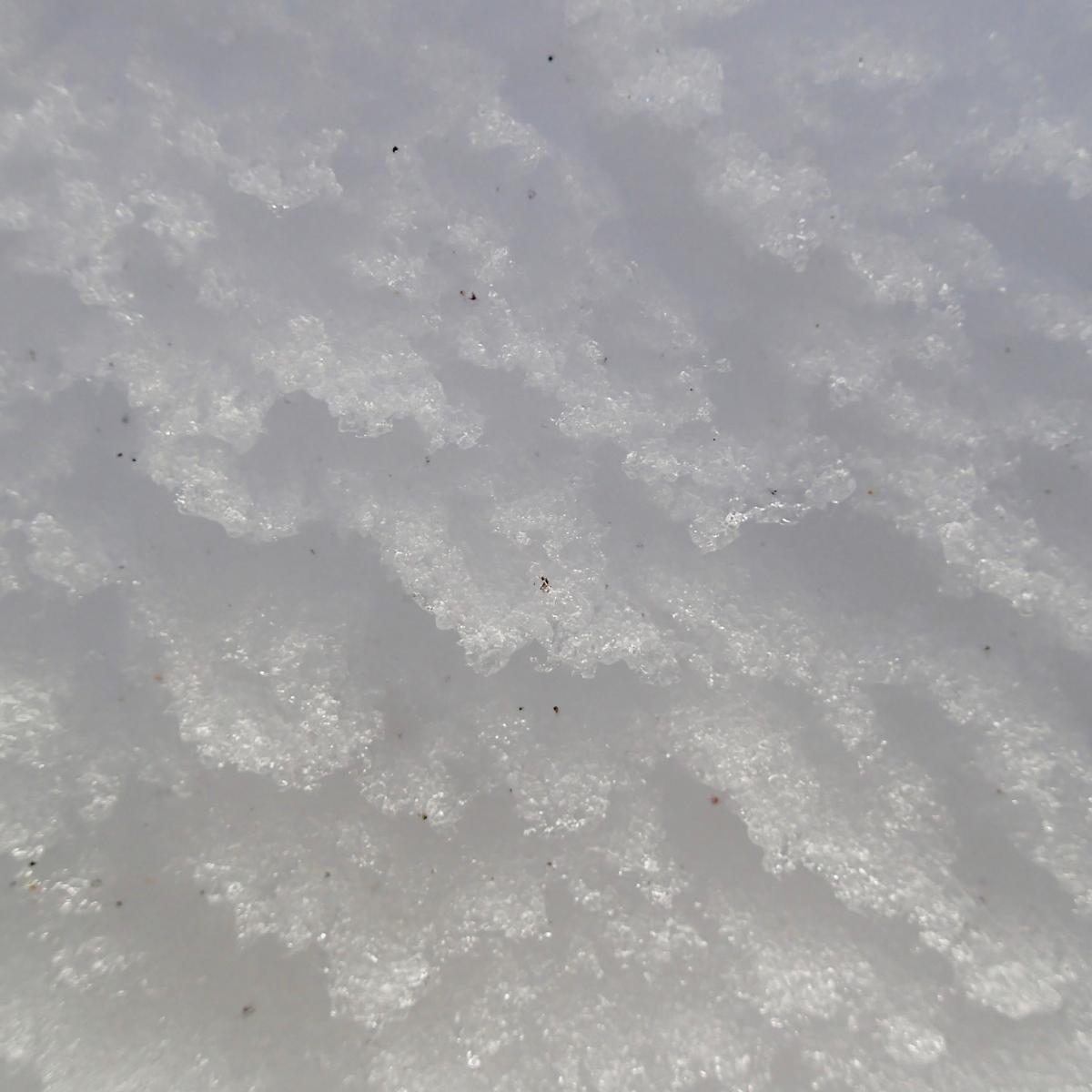
Corn snow
A change in snow texture is the first sign. The snowfall becomes heavy and wet. Snow starts to stick to my skis forming thick clumps on the bottoms making it impossible to glide! Frustrating, but this means spring is here and all is forgiven. At higher elevations I encounter “corn” snow, large “kernels” of snow formed by continuous cycles of melting and freezing. Corn snow usually forms a layer of crust on top with a soft, slushy layer underneath—again making skiing challenging.
Recently I was skiing in Rocky on a bright sunny day getting repeatedly pummeled with hard thumps of snow falling from tree branches. In the dead of winter, I occasionally get a so tap of light, fluffy snow. The heavy snow on the branches is easily loosened by the day's warm temperatures. All these changes are due to the longer hours of sunlight resulting in more intense sun exposure, warmer temperatures and then freezing temperatures at night.
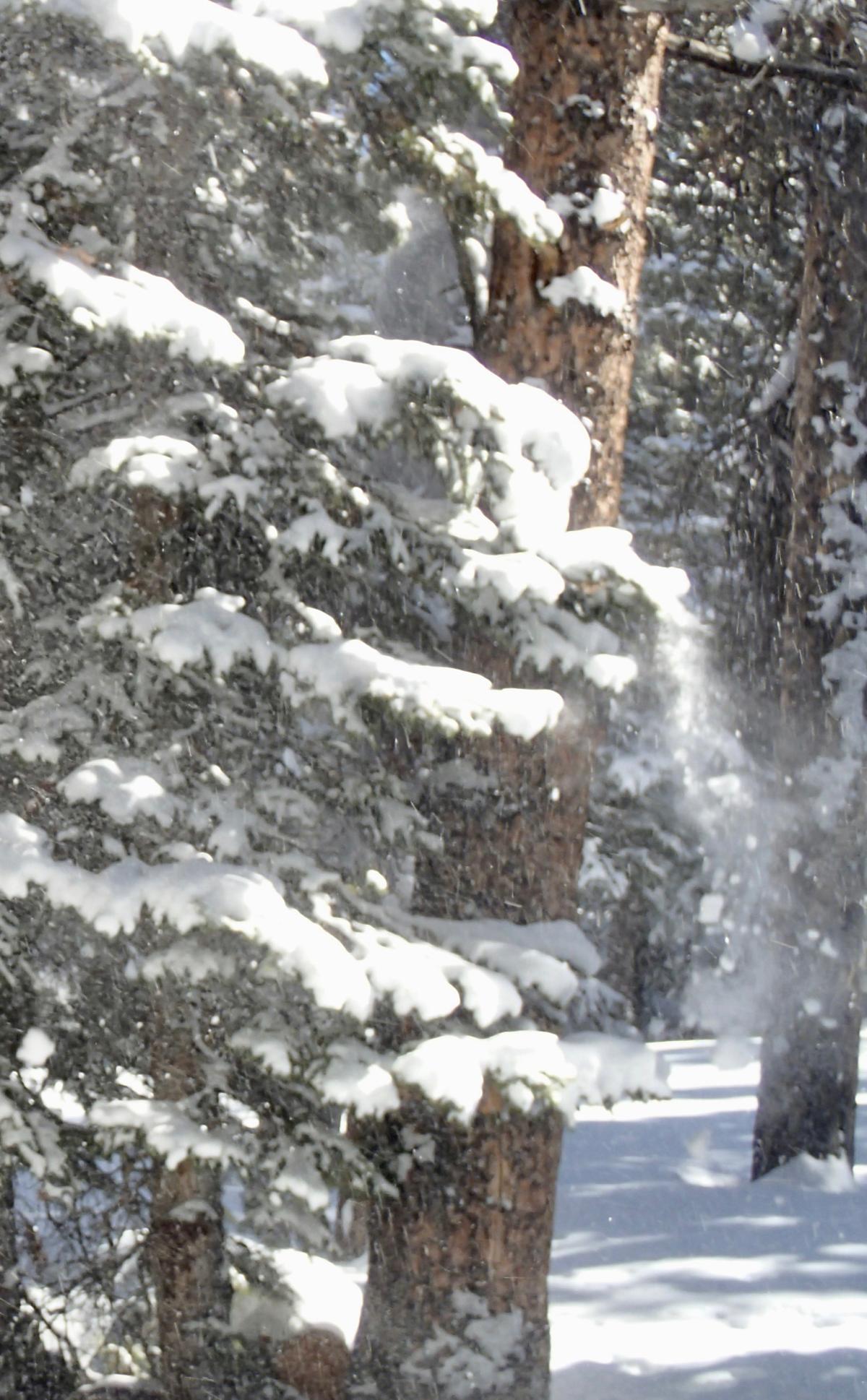
Spring snow falling off a tree during warmer temperatures
About the time of corn snow, I start looking for catkins blooming on the willows. Willows (Salicacea Family) grow abundantly in moist areas and along streambanks in the montane life zone. Rocky boasts several species of willows. I find willow species very difficult to identify as their determining characteriscs such as catkins and leaves are not present at the same time. Nonetheless, I find myself spending a lot of time trying to do so. Catkins are the flowers on willow plants appearing before the leaves. Catkins have no petals with female and male flowers growing on separate plants. The planeleaf willow, Salix planifolia, and the scouler's willow, Salix scouleriana, are common species found in Rocky.

Red Admiral Butterfly resting on catkins.
Willows can grow up to ten feet tall and often form large colonies. Catkins are intriguing flowers, some of the first flowers to appear in spring. Catkins are cylinder shaped and the female and male flowers display disncve characteriscs: female flowers showing off green seed capsules with a thin red projecon in each (style) and the male flowers displaying numerous spike-like projecons (stamens).
Quaking aspen trees (Populus tremuloides) also produce catkins in the spring as they are part of the willow family. When aspen catkins bloom, they fall as light airy, wispy parcles floang through the air and covering trails with fuzzy “fairy dust.” As with all willows when the pollen sacs burst open, they release thousands of seeds scattered by the wind. In summer months many snow willows and arctic willow plants bloom in the alpine but that is for another story. My next clue that it is spring are postings along park trails explaining temporary raptor nesting closures. Lumpy Ridge with its many rock ledges and outcroppings that make perfect nesting sites is usually closed from mid-February until mid-July allowing successful nesting of raptors. Loch Vale area has been added this year to off-trail closures starng February 15th.
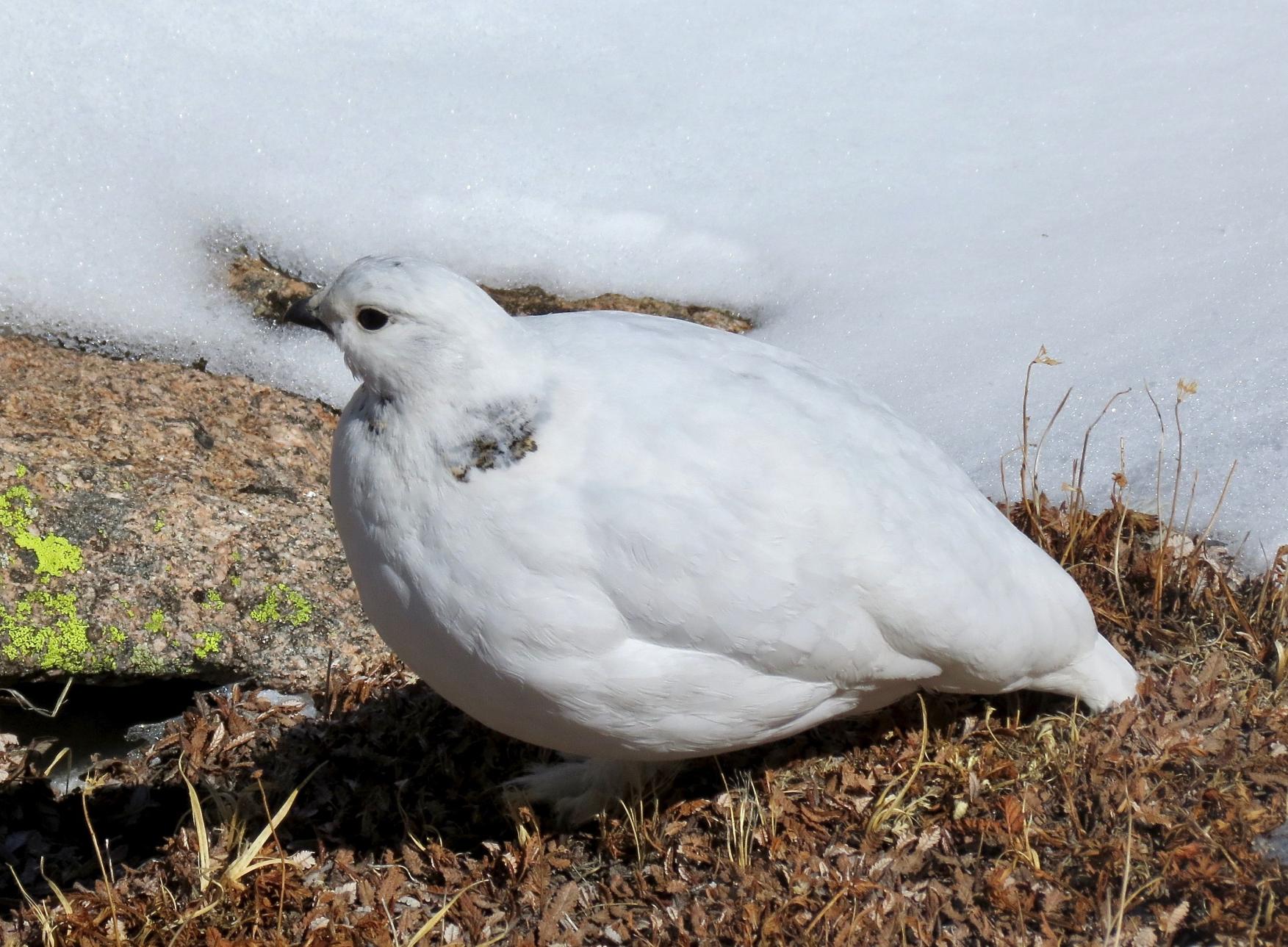
The following four pictures show ptarmigans in various stages of summer molt.
Another tip-off that spring is arriving is ptarmigan's plumage. Venturing in higher elevations among the rocky tundra this time of year, I may get a glimpse of the white-tailed ptarmigan. Ptarmigans molt feathers in preparation for the coming summer months from white to brown. Just as the white feathers camouflage the bird in snow, brown feathers enable the ptarmigan to camouflage in rocks for protection from predators.
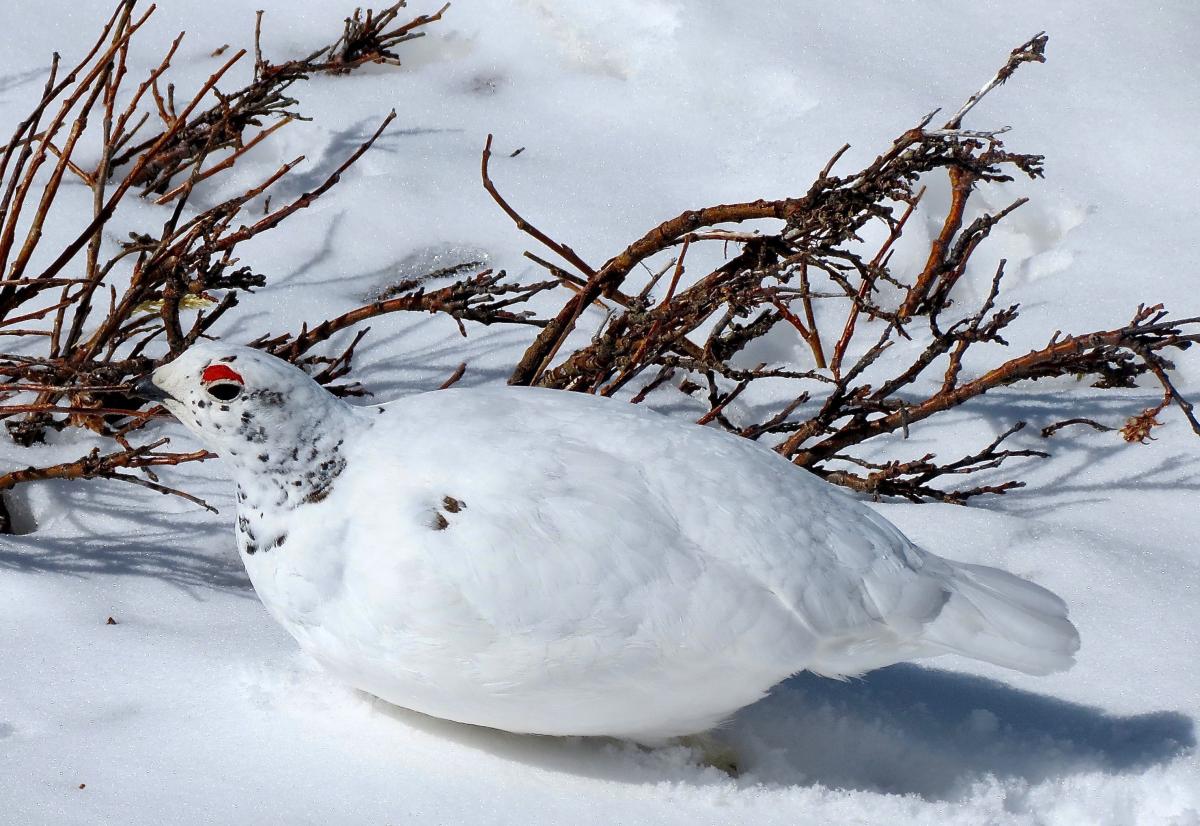
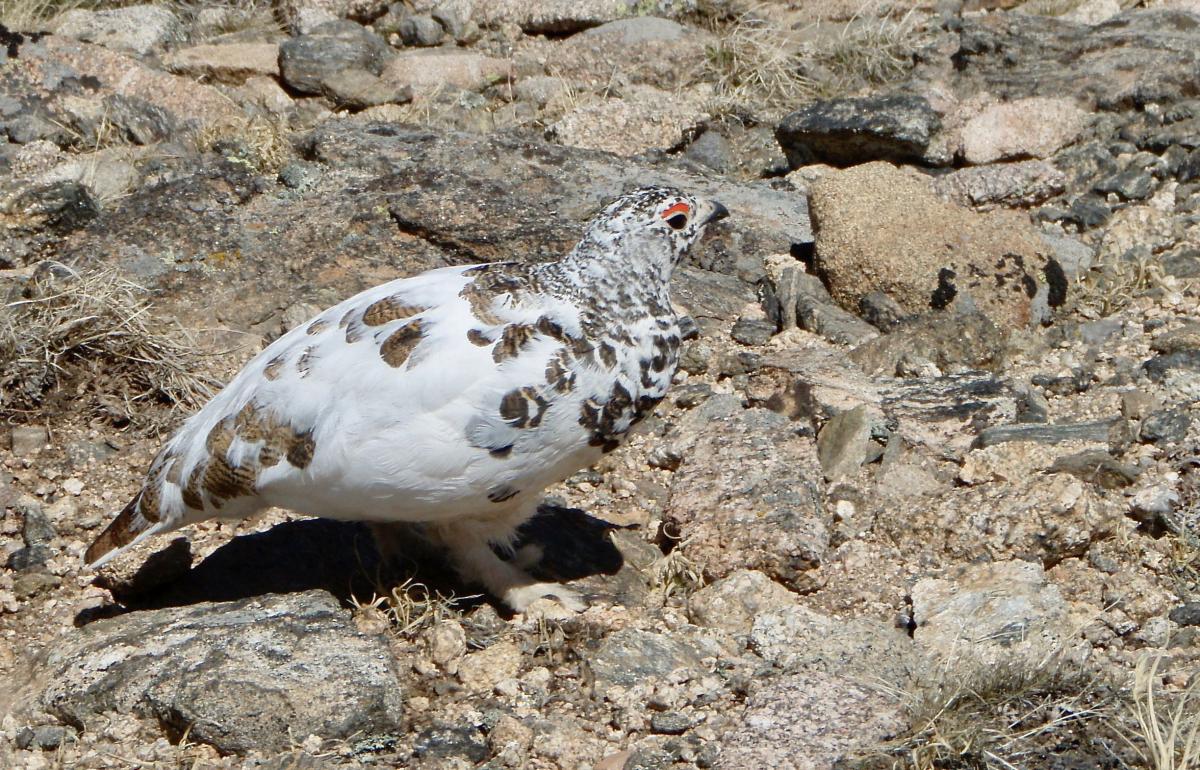
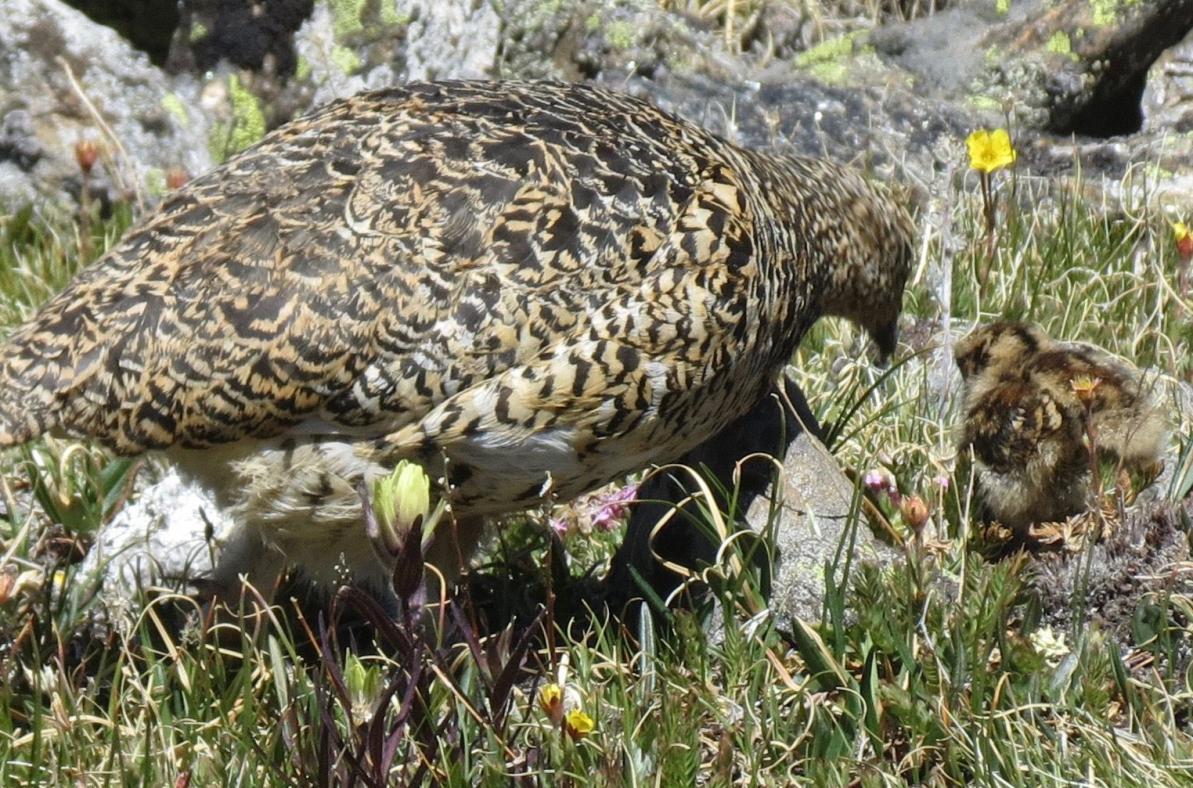
Summer plumage of the ptarmigan - can you see the baby?
Mule deer and elk will soon be in velvet. It sounds rather romantic, but velvet is a necessary stage in growing a new set of antlers. Velvet is the term for the soft covering on the growing bone and carlage in developing antlers. Velvet protects the emerging antlers. As the summer progresses the deer and elk shed the velvet and antlers “harden.” Antler growth seems to be triggered by longer daylight hours just as the growth in plants.
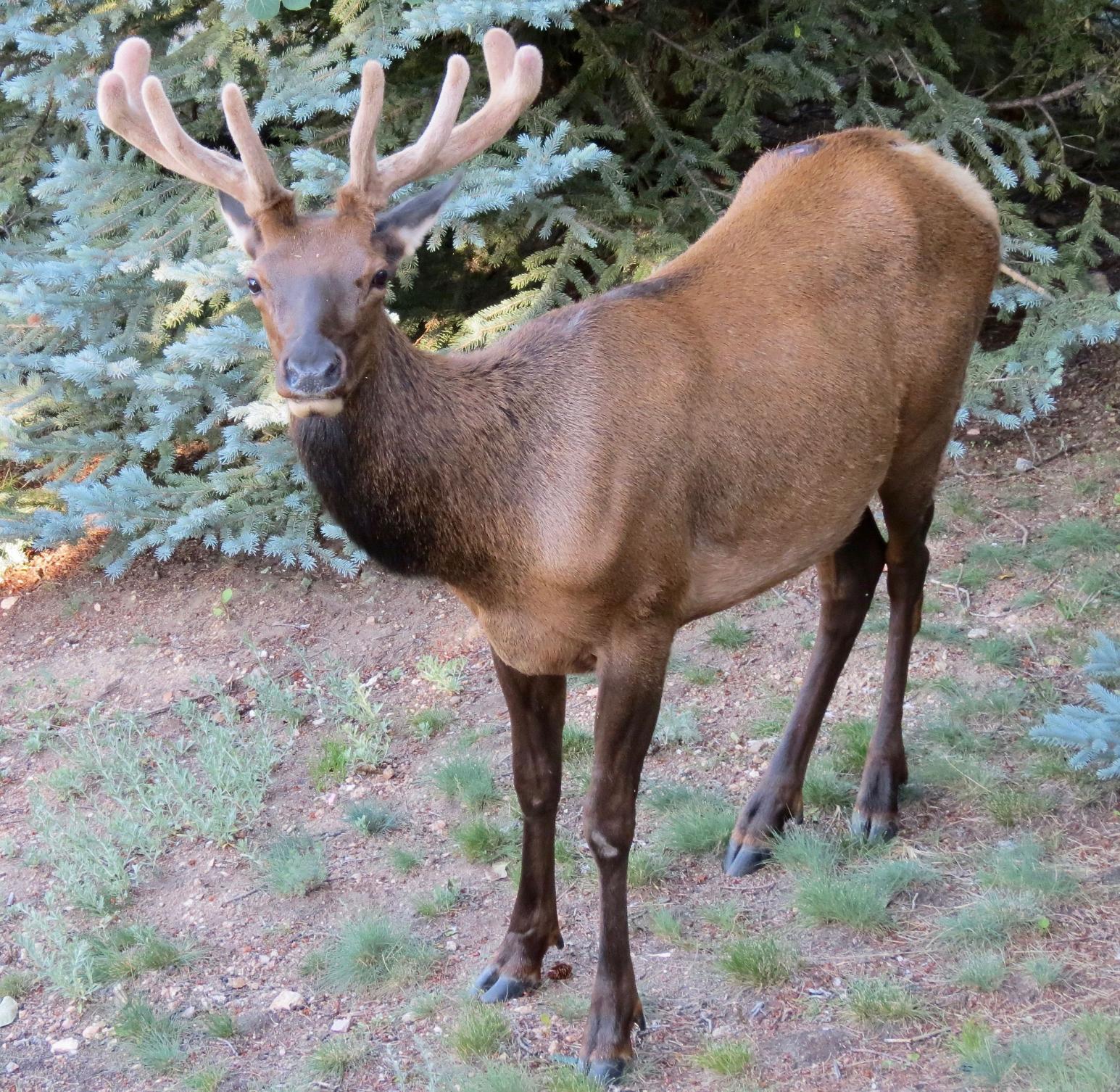
Elk in velvet
I'm seeing green! Yes, green shoots and leaves seem to appear overnight. One of the first plants greening-up is the dandelion. The dandelion is a non-native plant, yet not on the noxious weed list. The common dandelion, Taraxacum officinale, has edible, tasty leaves, flowers and roots. Dandelion seeds were brought to the US in the 1600s by European selers for their gardens. The dandelion is also the first source of food for bees and butterflies. Dandelions are essenal plants in nature's garden.
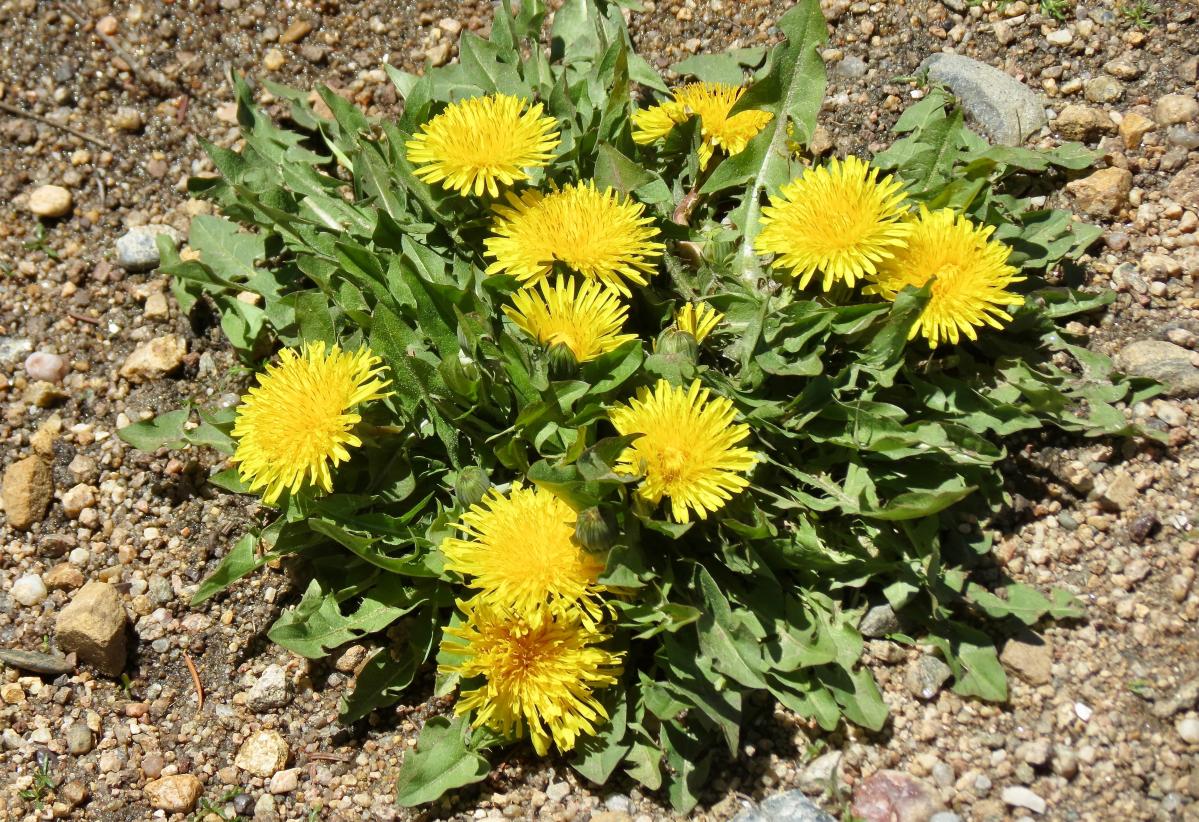
Dandelions are not native, but important early food for bees and butterflies.
On my to-find list in the months of April and May are caterpillars and butterflies. If I'm timely and patient I may catch a sight of the black/yellow spoed caterpillar that will emerge as the Rocky Mountain Parnassian buerfly. The Blue Copper is another one of my spring favorites seen in the montane zones of Rocky. Hollowell Park is my go-to place to observe butterflies in the early morning hours before they have warmed up.
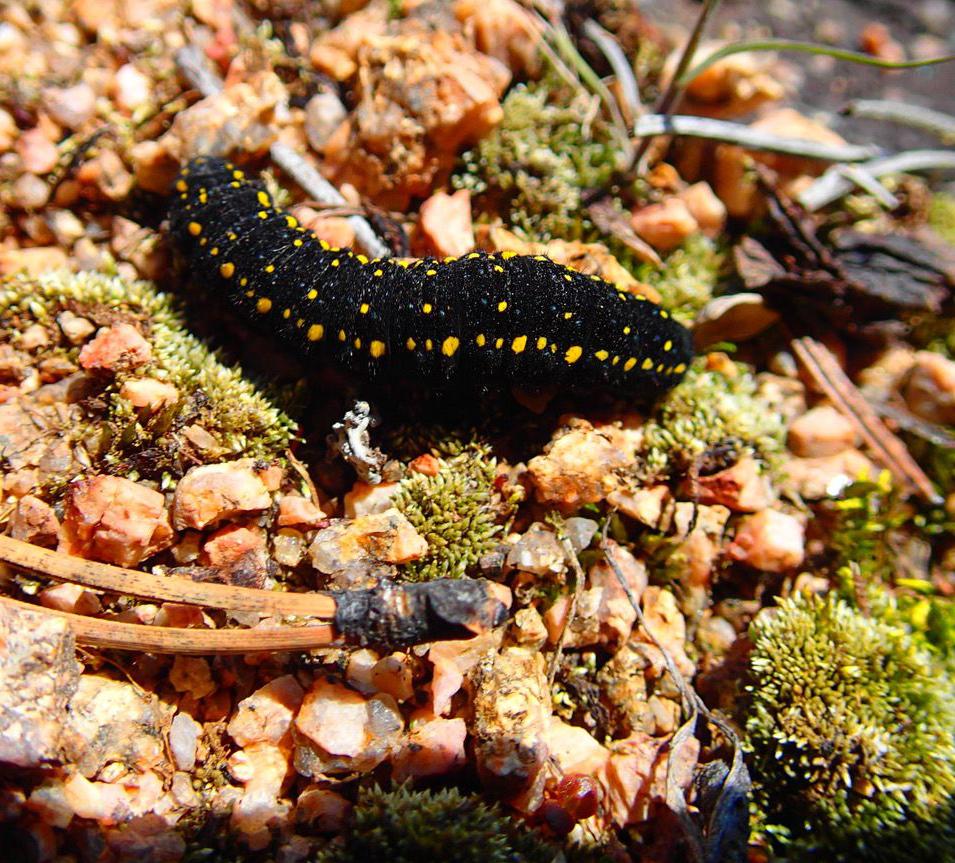
black/yellow spotted caterpillar
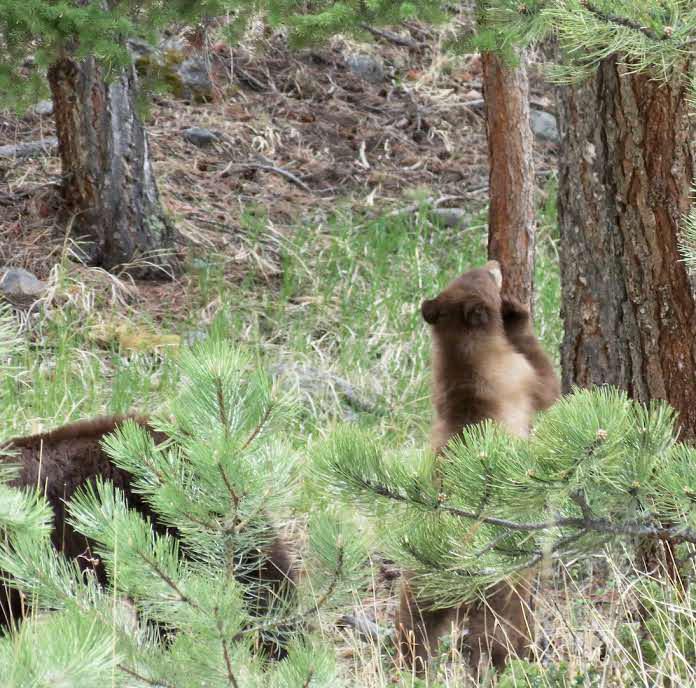
A bear forages for insects under the tree’s bark.
Rocky's black bears will be coming out of hibernation poking about tree trunks looking for tasty insects that lay under the bark. There is not much else out there yet to forage but these ny insects: ants, beetles and the like will suffice. Bears that make Rocky their home are omnivores and are extremely resourceful when it comes to food.

A recently-hibernating bear forages for insects.
I'm embracing Spring 2021 in Rocky!
Get out in there with an open mind and a sharp eye encountering these signs while adding your own observations in celebrating the arrival of Spring.

Marlene has been photographing Colorado's wildflowers while on her hiking and climbing adventures since 1979. Marlene has climbed Colorado's 54 14ers and the 126 USGS named peaks in Rocky. She is the author of Rocky Mountain Wildflowers 2Ed, The Best Front Range Wildflower Hikes, and Rocky Mountain Alpine Flowers, published by . She CMC Press has also created the “Life stages quiz” for this issue of HIKE ROCKY.

www.snowypeakswinery.com
please visit our business sponsors




